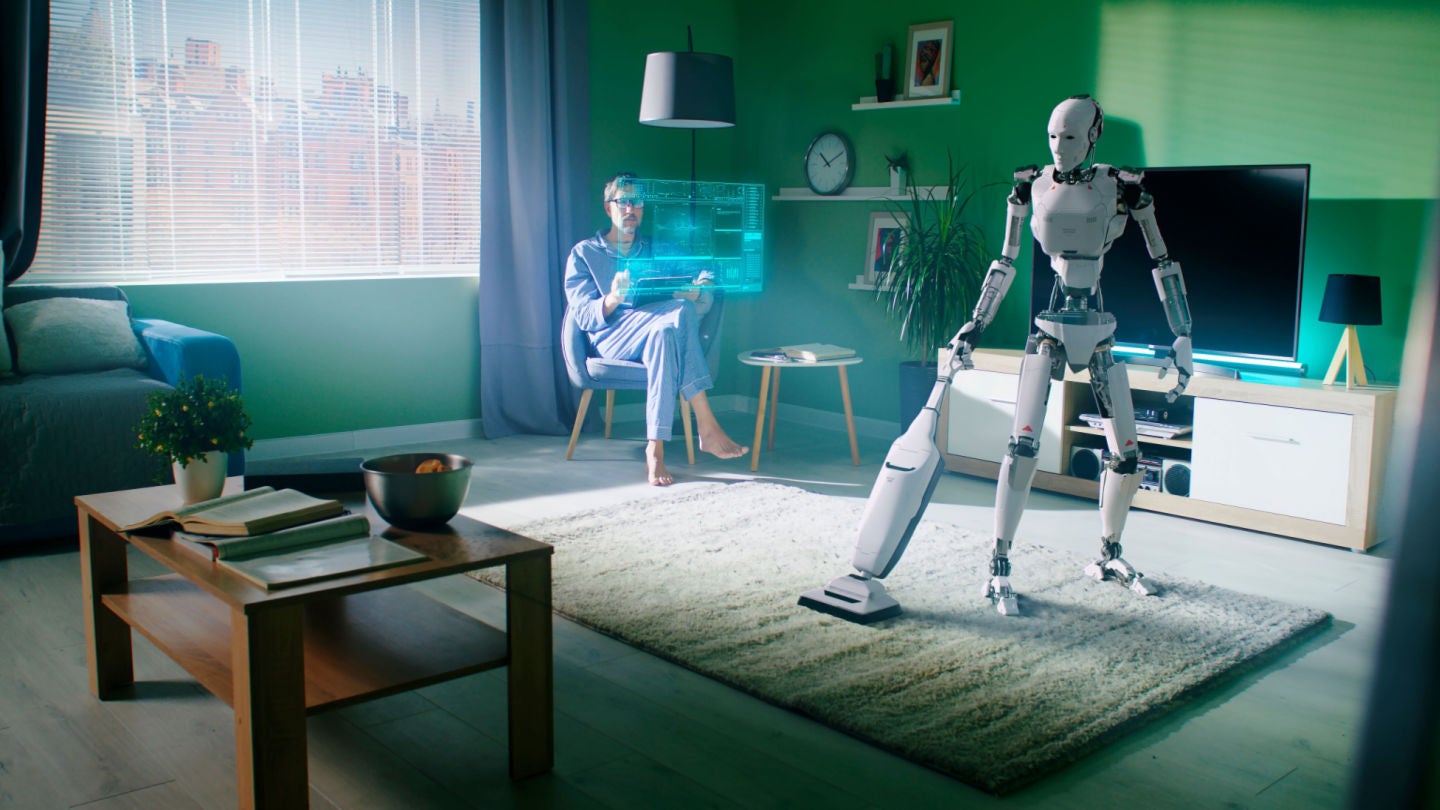A 2023 PLOS ONE journal report claims that robots will be doing 39% of all home chores by 2033. This report amalgamated the opinions of 65 artificial intelligence experts from both the UK and Japan as part of the wider discussion surrounding the AI revolution and robotics.
According to the same report, more men were excited about home automation in the UK, but for Japan, it was the opposite: more women were excited by the prospect of automating household tasks. This report leads the reader to ponder the implications of increased home automation on gender equality, as well as the limitations of such technology.
What realistically will a home robot be able to do?
According to GlobalData forecasts, the robotics industry was worth $45.3 billion in 2020. By 2030, it will have grown at a CAGR of 29% to $568 billion. Annual growth rates will peak at 37% in 2024. The same forecasts predict that the consumer robots segment of the market will grow by 29% in that same time frame. These forecasts indicate a growing demand for robots among consumers, which drove Amazon’s acquisition of iRobot in 2022. We are living in a world where people are more time-poor, and less willing to spend needless hours cleaning, particularly if they do not have to.
However, let’s not get carried away, as we have heard these grand promises before. AI and robots that would free consumers from domestic labor have been promised since the 1960s. For example, in 1966, the TV show Tomorrow’s World featured a household robot that could perform basically all household chores (cooking, childminding, cleaning, etc.) with the caveat that the manufacturer needed to receive GBP1 million to make it available by 1976. This obviously never came to fruition.
Ekaterina Hertog, associate professor in AI and Society at Oxford University, draws a comparison between home robots designed to tackle chores and the promise of driverless automated vehicles. In both scenarios, the technology has been unable to navigate unpredictable and irregular environments. For example, just as an autonomous vehicle will not be able to respond to obstacles on the road, robots at home face similar problems.
Can home robots help bridge the gender gap?
Yes and no. The introduction of home robots to perform domestic tasks could potentially alleviate some of the burdens on women, leading to greater gender equality in terms of work-life balance and career opportunities. However, this also depends entirely on how the robots are developed, marketed, and priced.
How well do you really know your competitors?
Access the most comprehensive Company Profiles on the market, powered by GlobalData. Save hours of research. Gain competitive edge.

Thank you!
Your download email will arrive shortly
Not ready to buy yet? Download a free sample
We are confident about the unique quality of our Company Profiles. However, we want you to make the most beneficial decision for your business, so we offer a free sample that you can download by submitting the below form
By GlobalDataCurrently, consumer smart robots carry a hefty price tag. A decent Rumba vacuum will set a consumer back on average $200, limiting its target consumer base to the wealthier, as well as to those women living in areas with access to this technology and decent connectivity.
Women living in more rural areas with less spending power will see no changes to their lives. Another point to consider would be whether these robots are marketed directly to women themselves, as has every other cleaning product since the advent of marketing. This would merely reinforce the notion that domestic tasks, automated or otherwise, are a woman’s responsibility.
This is not to suggest that developments in AI and other technologies enabling automation will not significantly impact the domestic landscape. Rather, it is to suggest that these changes will not stoke any global revolution in the next ten years. Perhaps, instead, let’s look ahead to 20 or 30 years’ time.









Related Company Profiles
iRobot Corp